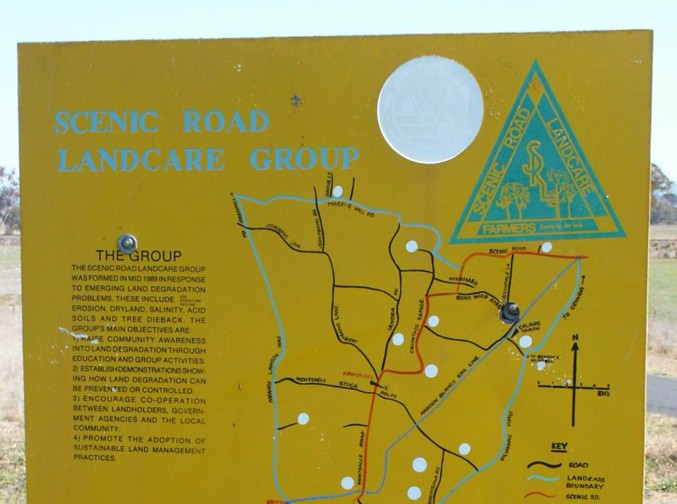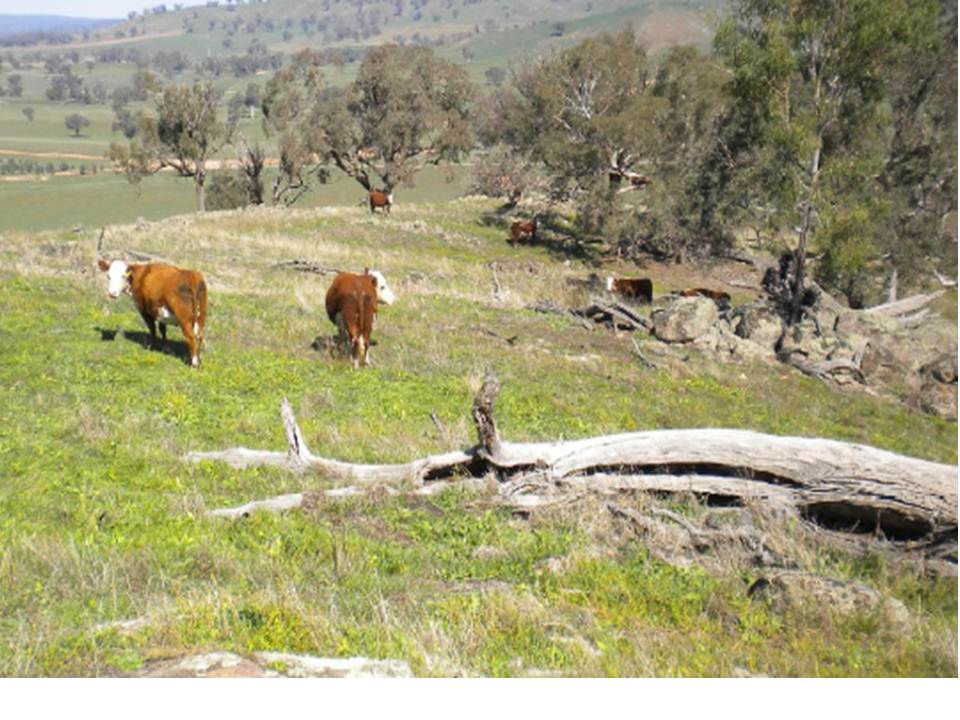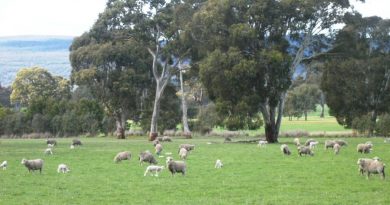Landcare review questions dodge participating farmers positive outcomes
By Patrick Francis
Reviews of the National Landcare Program by the two bureaucracies involved, Department of Agriculture and Department of Environment, are a relatively common event. They generally produce no important on farm outcomes associated with credible ecosystem services in conjunction with productivity. That’s because the Departments are too fixated on processes rather than outcomes and have never supported any methodology to recognise stewardship.
It not surprising therefore to read in the preamble to the current (August 2014) review for regional stream funding that:
“Guiding principles for the new programme (National Landcare Program) are that investment in managing our natural resources be simple, local and long-term.
- Simple – delivered through simplified guidelines and application processes, and reporting requirements.
- Local – deliver practical natural resource management outcomes with a focus on local and regional-scale activities and on maximising community participation in the delivery of natural resource management projects.
- Long-term – an on-going initiative that will continue significant investment in natural resource management priorities.”
Futhermore the review states:
“The new programme will involve local delivery through a regional stream and a national stream. It will support various activities that involve caring for the land, including soil conservation, management of erosion and salinity, sustainable farm practices, restoration of native habitats, revegetation, control of weeds and pests and the development of local natural resource management skills and knowledge.”

There is no mention of the fact that thousands of farmers have been doing all these activities for decades and their stewardship produces a range of ecosystem services which go unrecognised. Most of the questions asked substantiate the highly diversified nature of the National Landcare Program and despite the key roll of farmers as stewards of the majority of Australia’s land mass, their opinions are of minor interest to the bureaucrats.
The background information in the preamble to the survey confirms this when. It says:
Audience:
Anyone from any background
Interests:
- sustainable yields,
- Native wildlife protection,
- Threatened species,
- Ecological communities,
- EPBC Act,
- Land management,
- Biosecurity,
- Impact to native wildlife,
- natural resource management,
- Landcare,
- grants and funding,
- land management,
- biodiversity
Given all the pre-eminent role of farmers, in particular most professional farmers, as land stewards, surely they could be singled out in the audience and interest areas covered. The fact that professional farming is not mentioned by name reflects the tenor of the likely outcomes the survey will produce.
Here are most of the questions in the National Landcare Program (NLP) consultation survey with my responses:
NLP: What opportunities are there for greater partnerships within the natural resource management community, including landcare, and what is the best way to foster/encourage these partnerships?
Pat’s response: After 28 years of landcare farming it’s time to shift regional stream funding more towards stewardship recognition for those farmers who have made a commitment of land and management to produce ecosystem services.
NLP: How could support for state and national Landcare networks best underpin the objectives of the programme and support the activity of all landcare-type groups?
Pat’s response: Whose program are you referring to. Does the survey want farmers ideas about landcare farming that produces ecosystem services in conjunction with food and fibre production or bureaucrats ideas about programs in which there is considerable self-interest that they continue?
NLP: How can regional natural resource management organisations strengthen Landcare and community networks within and between regions?
Pat’s answer: I don’t think they need to be strengthened, they need to change focus towards the farmers who produce outcomes. The recalcitrants won’t change and the lifestyle farmers should start to pay for knowledge rather than landcare groups reinventing the wheel with projects that have been done in the past.
NLP: How can regional natural resource management organisations better promote the achievements and outcomes of landcare?
Pat’s response: Start off by differentiating between community landcare on public land , and on-farm landcare providing ecosystem services in conjunction with food and fibre. Next start to recognise farmers producing ecosystem services outcomes in conjunction with what is optimum productivity for their farming system. Acknowledge different farmers use different approaches eg organic, holistic, conventional, all of which can be positive for the farm ecosystem.
NLP: What are the best mechanisms to achieve greater participation by the community, including landcare representation, in regionally based natural resource management planning?
Pat’s response: That’s not the question to ask about landcare farming. It should be: Which farmers are providing landcare farming ecosystem services in the catchment and how can they be recognised for doing so? It’s time to stop chasing the recalcitrant farmers and lifestyle farmers using NLP funding.
NLP: What are the best mechanisms to achieve greater participation by the community, including landcare representation, in setting local and regional priorities and aligning them with national outcomes?
Pat’s response: Again the wrong question which highlights how bureaucrats want to see landcare practiced, not how farmers practice it. Supply of any ecosystem services on farms should be welcomed by all NRM organisations across Australia and their supply should be based on farmers priorities not bureaucrats ones.
NLP: What are the best mechanisms to achieve greater participation by the community, including landcare representation, in decision making on natural resource management investments?
Pat’s response: Take and encourage a holistic approach to landcare farming rather than continuing funding the silo projects approach which became outdated for landcare about 10 years ago. Start to recognise farmers providing ecosystem services through stewardship investment. If NRM agencies keep chasing the recalcitrant and life style farmers, the early and mid-adopters loose interest.
NLP: What are the best mechanisms to achieve greater participation by the community, including landcare representation, in delivery of National Landcare Programme projects?
Pat’s response: This question highlight the importance of directing the question to farmers as opposed to the volunteer landcareres working on public land projects. NLP projects portfolio has watered down the role played by farmers who are responsible for 60% of Australia’s land mass. The non-farm portfolios are important but they mean many NRM agencies and networks have little relevance to farmers.
NLP: What expectations should regional natural resource management organisations be required to meet in terms of community engagement and participation, including with Indigenous groups, landholders, landcare and other community groups, and local governments?
Pat’s response: With landcare farming start by recognising farmers who have been making a contribution to ecosystem services for the last 10 to 30 years.
NLP: How could the governance and community engagement performance of regional natural resource management organisations best be measured and communicated to their communities?
Pat’s response: Stop trying to big note the NRM organisations. It’s mostly irrelevant what their performance is; what is important on farm land is the ecosystem services outcomes produced inconjunction with food and fibre production. Why not have NRM focus on on-farm outcomes? Once that is done on an on-going basis they will have a story to tell the Australian public.
NLP: What assessment methods would be most effective to clearly understand regional natural resource management organisations’ performance?
Pat’s response: This is virtually the same as the previous question. The same answer applies.
NLP: How can regions and the Australian Government best use simplified reporting to demonstrate the on-ground benefits of natural resource management investment to the broader public?
Pat’s response: While the NRM agencies keep focusing on themselves to be seen in a good light by the government and broader public they will continue to do what they have been doing for the last 20 years, that is, provide “feel good” reports about engagements which have little substance especially when it comes to on-farm ecosystem services in conjunction with food and fibre production.
NLP: Do you have any additional comments on the design and delivery of the National Landcare Programme?
Pat’s response: It’s time to change the approach to NLP funding for landcare farming. Let’s recognise achievers rather than chasing the recalcitrants and life stylers.


